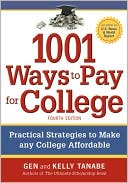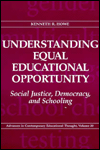Getting Choice Right: Ensuring Equity and Efficiency in Education Policy
School choice is a topic that sparks controversy on both the national and local levels. Some parents (mainly the affluent) have always had school choice, either through private school, or by buying a house in a preferred public school district. In recent decades, new forms of school choice have fundamentally altered the educational landscape. In many cases these new mechanisms-busing efforts, magnet schools, charter schools, open enrollment, and tuition vouchers-have provided less affluent...
Search in google:
School choice is a topic that sparks controversy on both the national and local levels. Some parents (mainly the affluent) have always had school choice, either through private school, or by buying a house in a preferred public school district. In recent decades, new forms of school choice have fundamentally altered the educational landscape. In many cases these new mechanisms-busing efforts, magnet schools, charter schools, open enrollment, and tuition vouchers-have provided less affluent families with their first taste of school choice. Getting Choice Right assesses the basic mechanics of school choice, with a focus on the question of how, if the nation decides to expand choice, it can be implemented in a way to benefit the most students while minimizing any social costs. The first section of this book studies lessons for the design of school choice emanating from economic theory and practical experience. Essays describe what policies are needed to promote both a vigorous demand for and an adequate supply of educational choices. Addressing the valid concerns that opponents have raised, the second part examines the impact on students who are left behind in failing schools, the impact of choice on racial integration, the politics of school choice, and the implications for civic engagement of tomorrow's adult population. By itself, school choice is not inherently good or bad, and the ability of school choice to improve both efficiency and equity in the nation's schools hinges on a number of key policy decisions. Factors such as the flow of information to parents, the inducement that the system provides for families to choose the ideal schools for their children, the regulations and funding that influence the supply of choice schools, and the incentives for schools to encourage racial and socioeconomic integration all play important roles. In Getting Choice Right, distinguished contributors analyze the potential benefits, the potential risks, and the policy options associated with a move toward a universal system of school choice.








